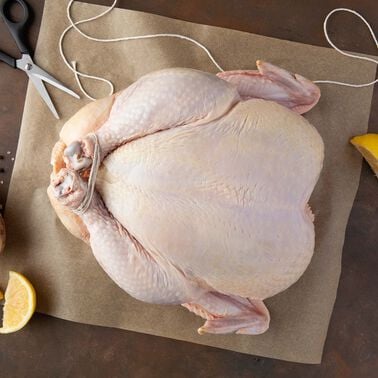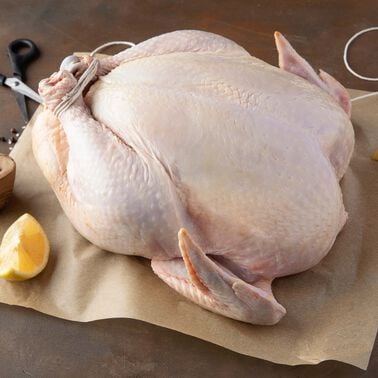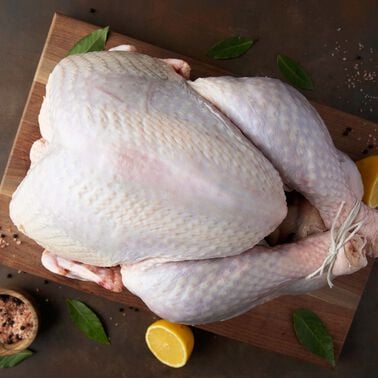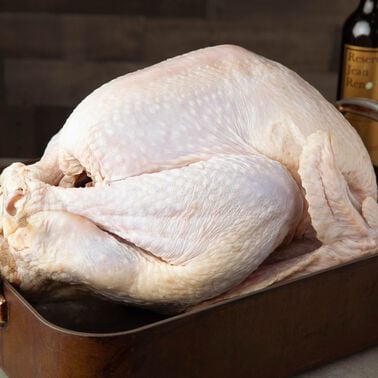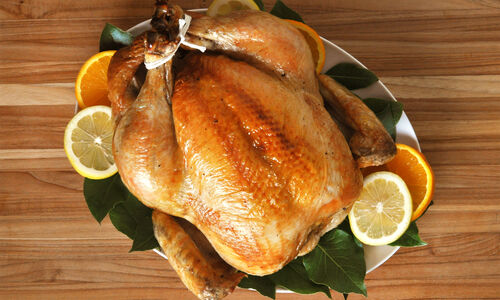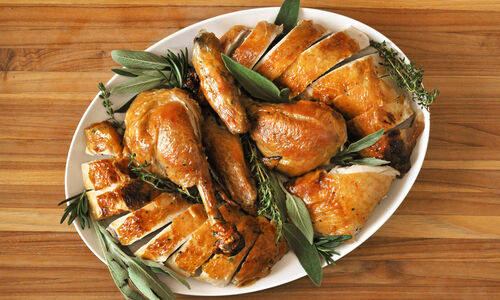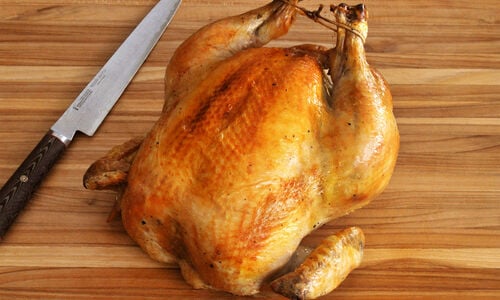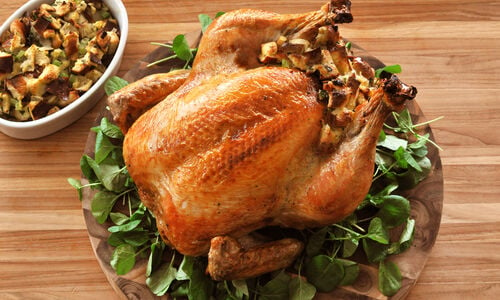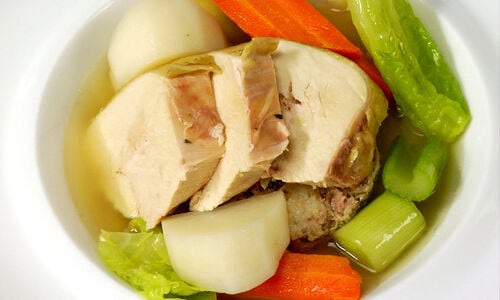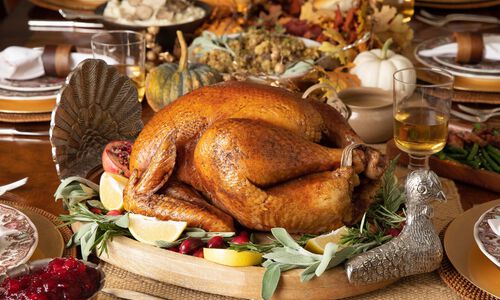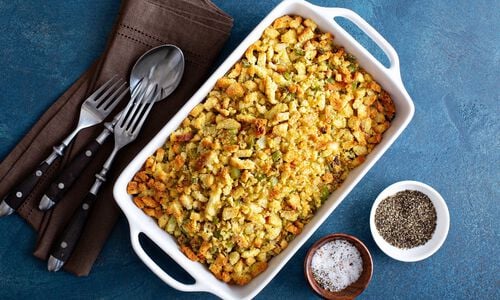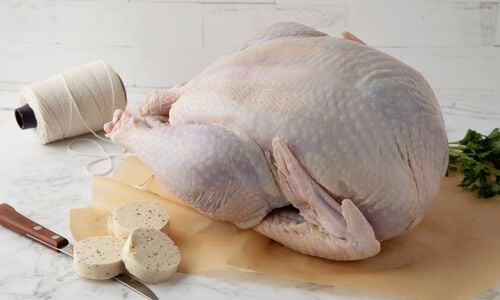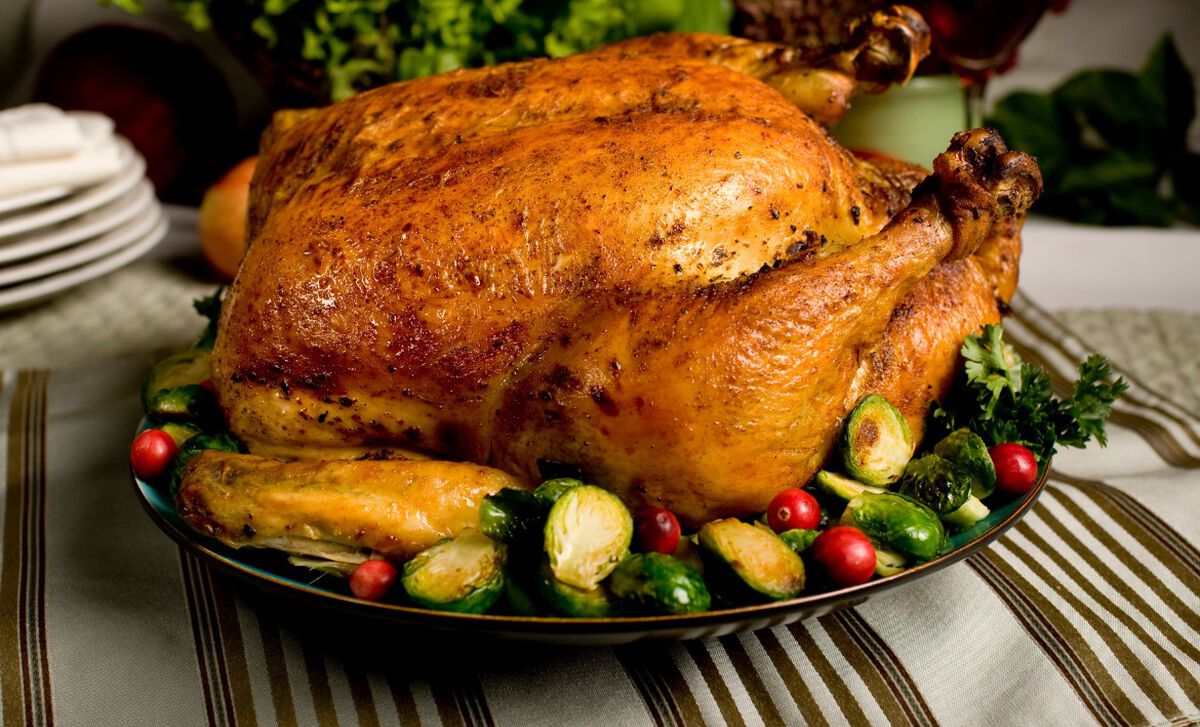
Why Roast a Capon for the Holidays?
If you are not familiar with this hefty bird, don’t think for a minute that a capon is a compromise. Quite the contrary, these extraordinary birds are raised exclusively to be a culinary treat of the highest order. Plump-breasted with prized, white flesh wonderfully marbled with fat; capons can easily carry any holiday feast. You will find the meat distinctively flavorful, lusciously rich and moist, and tender beyond belief. So much so, that this could be the start of a new tradition. At the very least, you won’t want to wait another whole year before enjoying one again. To learn more about capons, read our capon primer.
Stuffed Capon Recipes
Another beauty is that there is no elaborate recipe, complex technique, or special handling required. Think of capon as a larger chicken; if you can roast a chicken, you can roast a capon. Fill the capon with your favorite dressing, or try one of ours; Wild Boar Sausage with Apple Stuffing is a classic, and Brioche Stuffing with Duck Sausage and Pears will also work well with capon.
If you are not stuffing the capon, then season the cavity with a sea salt and freshly ground pepper, then truss it. Then rub it with softened, rendered duck fat, salt and pepper the skin and oven roast, much like roasting a large chicken. You might even want to try some new cooking methods to go with your new bird. In the Gascon countryside, capons are the traditional Sunday chicken cooked as poule au pot – slowly poached in a pot of vegetables and rich stock, and stuffed with a delicious soft dressing.
Trussing a Capon
When roasting a capon for your holiday meal, truss it much the same as you would a turkey or a chicken. Remove the wishbone, and bind the bird so that the drumsticks rest nicely in place against the tip of the breastbone, with the wing tips folded back neatly beneath the shoulders. It will make for a beautiful shape, cook more evenly, and be easier to carve. This is especially brilliant because capons are the perfect bird to carve at the table. Large enough to be grand, they make for an impressive entrance, yet they are small enough to manage easily.
Roast Capon Recipes
- Preheat your oven to 450°F.
- Rub the capon with our softened duck fat, gently massage it into the skin. Season the capon with salt and freshly ground pepper.
- Begin roasting capon on the lower middle oven rack in a preheated oven. 30 minutes into the roasting, reduce the heat to 350°F for the remainder of the cooking time. This jump-starts the browning process and sears the meat, sealing in precious juices.
- If using an x-shaped rack, start the bird breast down for about 15 minutes. Then turn the bird on one side for 20 minutes, then onto its other side for 20 minutes. After that, turn the bird breast up and finish roasting. You can easily coordinate this with your basting, which should be done every 10 to 15 minutes. Baste with melted duck fat until the capon creates enough pan juices.
- If using a flat rack, start roasting capon on one side, then turn onto the other, giving each side an extra five minutes, and finish roasting breast up.
- For a 7-pound capon, roasting should take about 1 1/2 hours. Use a quick-read meat thermometer to test the internal temperature for doneness.
- Transfer roasted capon immediately to a board to rest, tilting it first over the roasting pan to quickly drain any juices. The juices running from the vent should be clear yellow. Let the capon rest uncovered in a warm place for 20 minutes before carving.
- Remember it will retain heat just like any other roasted meat, and continue cooking during rest time, raising the internal temperature another 5 degrees or so. The ideal final internal temperature for cooked poultry is 165°F.
Tips for Cooking Capon
- A 7-pound capon will yield 6 to 8 single servings. If you make a dressing, allow 1/2 cup per serving. Be careful not to over stuff the bird. Cook any excess stuffing in a separate baking dish
- Put the bird into the oven legs first to position the dark meat towards the back of the oven.
- Since this roasting method requires frequent basting, it is important to do it as quickly as possible to better maintain oven temperature.
- This bird is so amazing all on its own, that a spoon or two of a delicious deglazing sauce just before serving is all you need, which is nice if you don’t feel like making a full-blown gravy. You can add a chopped onion and carrot to the roasting pan about 50 minutes into the roasting to enhance the flavor of the roasting juices. A little minced garlic or shallot sautéed in the drippings before adding the deglazing liquid will add even more flavor. Simmer this sauce for several minutes allowing it to reduce and concentrate, then strain through a sieve before using.
